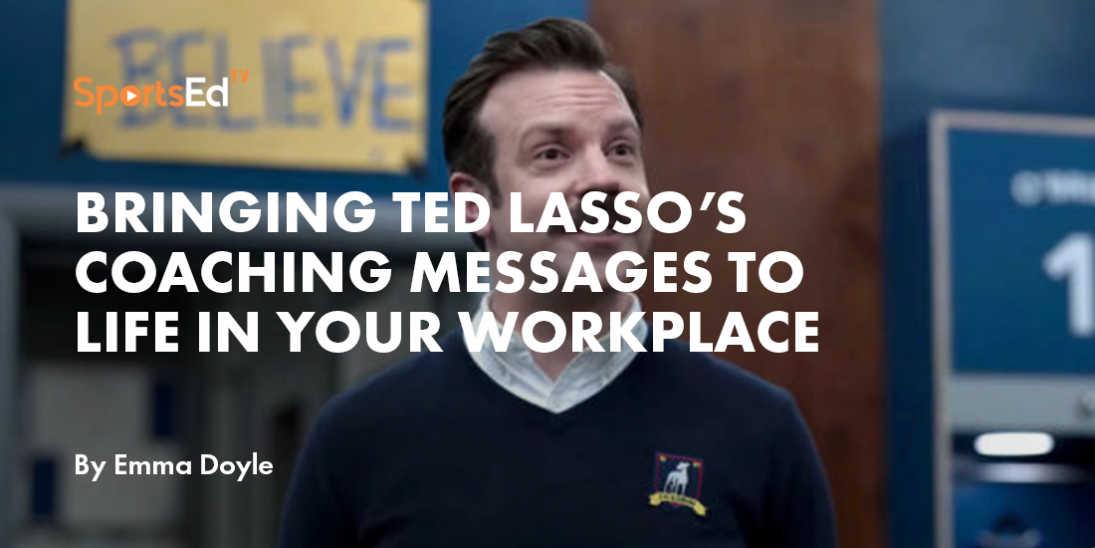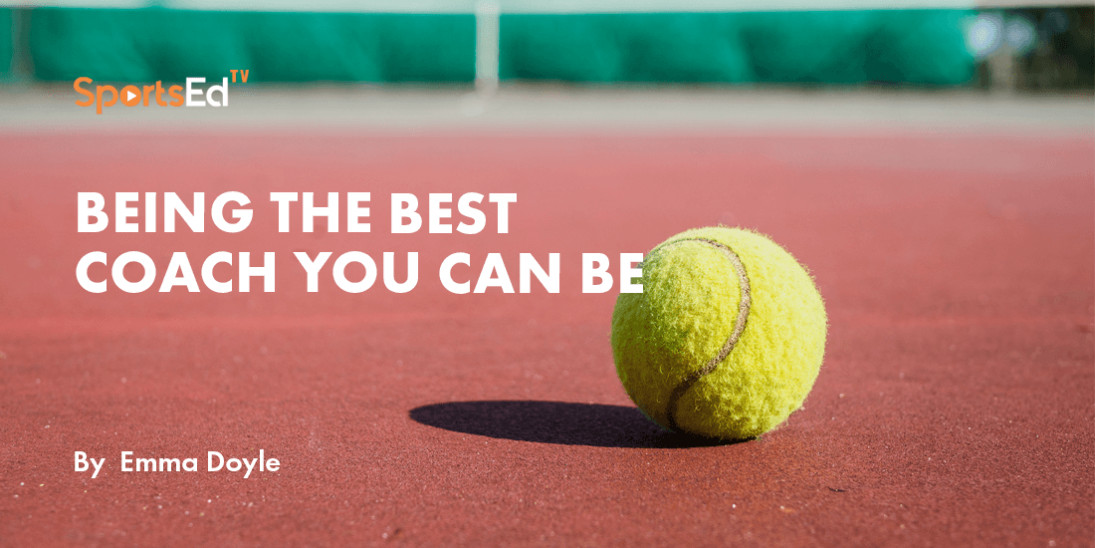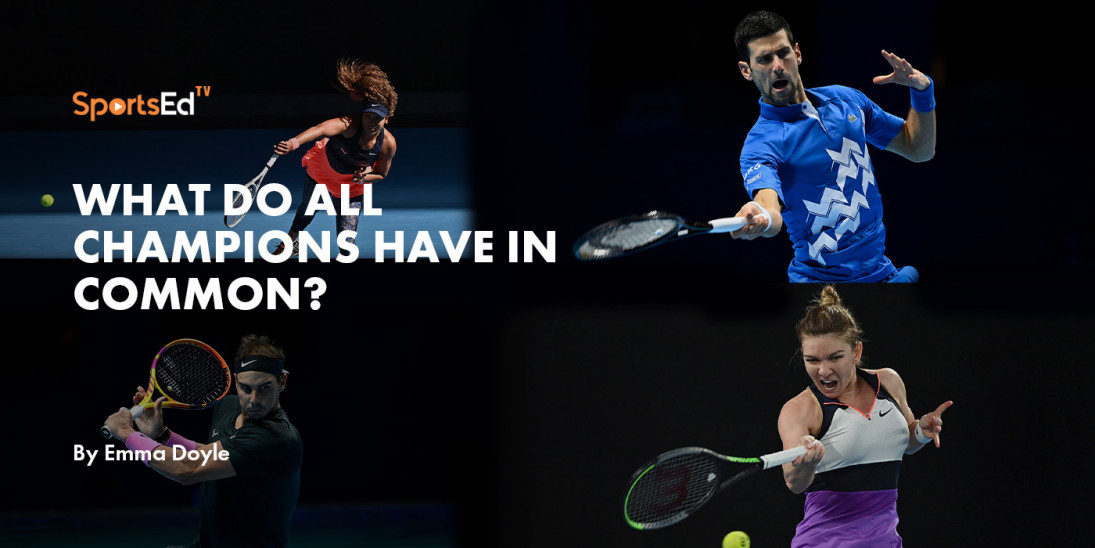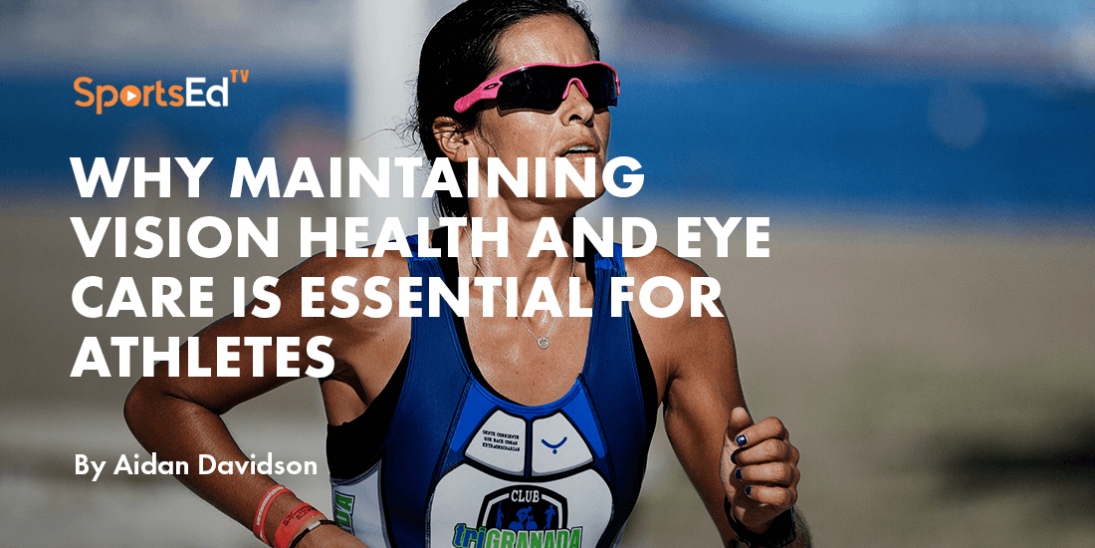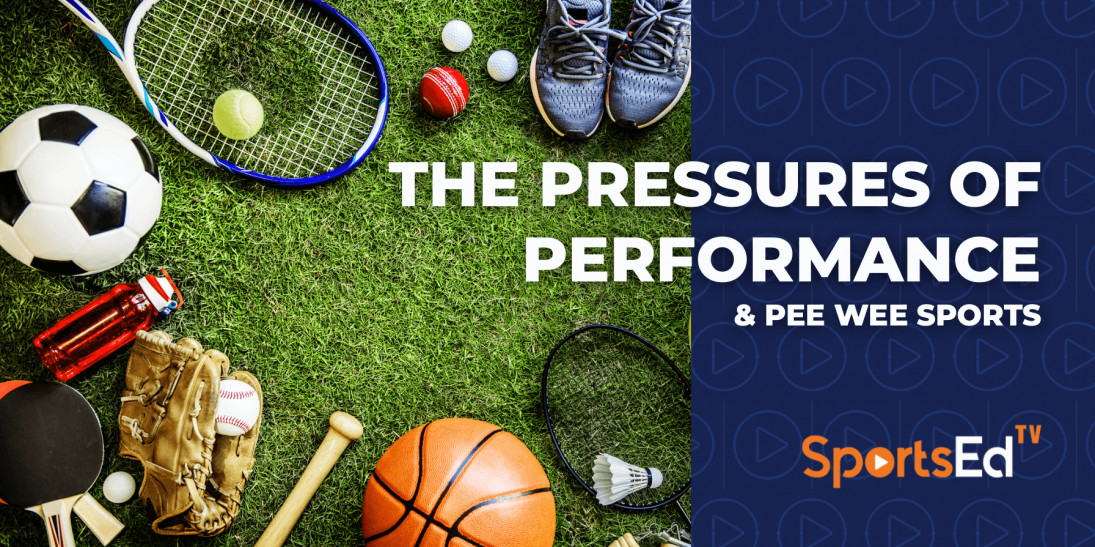Tennis
Welcome and thanks for visiting...

BIG BODY LANGUAGE – Enhance your performance: A Conversation With Emma Doyle
Emma is a Neuro-Linguistic Programming (NLP) and Emotional Intelligence Practitioner with a strong background as a coach on the professional tennis tour. She is a Tennis Australia High-Performance Coach who is passionate about effective communication and coaching strategies that help people discover their inner coach.
In this blog, Emma describes the importance of body language in athletics, and how we can make small changes in our poise, posture, and presence to improve it. Improving body language can have a tremendous impact on the way we compete and on the outcome of matches given that this can affect the athlete's confidence as well as momentum during competition.
SportsEdTV: How does body language impact performance in athletics?
Emma: There is no doubt that your thoughts and your words impact your physiology that ultimately, affects your body language. Sometimes this is within your awareness, and other times it is outside of your awareness but one thing is for certain, the people watching your match will often be able to guess who is winning just by looking at both players between the points (and especially on the change on ends).
The mind-body connection means what we feel and think has a direct consequence on our physiological body. They are intrinsically linked. Our emotions and our health are deeply interdependent. When we feel ill it is the body’s way of providing a wake-up call and a chance for us to reflect on our behaviors. Dis-ease is the body’s way of saying that is out of balance and not living according to our true innate values, desires, and goals.
I videoed one player I worked with (only between the points) and she had no idea how her body language was giving off a certain vibe that actually helped her opponent feel more confident. The two went hand in hand. What we did to overcome this was to film her between points when she showed neutral or positive body language only. We added her favorite track to this short 3-minute clip to help her model how she wanted to be, which (as you probably guessed), had a direct impact on her performance.
SportsEdTV: What are some of the attributes of a confident athlete?
Emma: Some of the attributes (as it relates to body language) of a confident athlete can be best described and remembered as the 3 P’s. These players have;
- POISE – they display emotional flexibility and resilience
- POSTURE – their shoulders are back and down, they own their walk with purpose
- PRESENCE – they have presence of being, they are mindful and have a positive vibe/certain energy

SportsEdTV: How can poor body language affect performance?
Emma: Think about the following physical condition (a common headache) that we can all relate to and then reflect on the following potential connections;
Headache on the:
Top of Head – Pressure on self to perform
Back of Head – Under-performing (feeling as if you are…)
Front of Head – Don’t want to see or know what’s ahead
Or Sore throat – not speaking your truth/holding something back
Louise Hay (Heal your body) – Great resource for you to look inward
Ultimately when we hold tension/stress in our bodies, it usually plays out non-resourcefully. Or in the words of Sir Robbie Louis Stevenson – “Sooner or later, everyone sits down to a banquet of consequences.”
Now let’s look at performance. Poor body language (head down, shoulders slumped forward, walking like you don’t care, or walking too fast) often equates to a player being out of rhythm. Something has disrupted their routine and the danger here is the power of momentum. All of a sudden, 2 points lost in quick succession can lead to you being 4-1 down before you stop and ask yourself, how did this happen? Or what just happened? Poor body language can cause a disruption to your regular routine and in most cases, the points happen quickly. The opponent may even pick up on this and cause the flow of points to happen faster than what you would normally be used to.
SportsEdTV: How does body language affect confidence? Can confidence be boosted by having a powerful posse and positive body language?
Emma: We all know that if you play well then this builds confidence which creates a flow-on effect to the point that people will comment – “that person is really confident” But what comes first – do you need to play well to have confident body language or can you display great body language and then play well? Is it the horse before the cart or the cart before the horse? Well here is a little secret – our body language and the impact that this has on our thoughts, feelings, and actions is more powerful than we may realize. There was a famous study done by Professor Mehrabian in 1967 talking about 55% of how our emotions are communicated is through our physical body language. Therefore, what if you could manufacture certain ways of being that trigger optimal emotional states just by using your physicality in line with your personality – how simple yet effective is this revelation?
Well, it is possible and it is accessible to everyone because what you do between points is 100% within your control! A simple example is that of a smile ⺠Did you know it takes fewer muscle activation to smile than it does to frown? Or more practical tennis examples include;
- Fast feet (similar to what we see Nadal doing sometimes) when he gets up from a change of ends (yes, it takes energy but it’s short)
- Bouncing on your toes – we hold so much nervous energy in our bodies that usually the feet are the first to stop so activating them is critical under pressure
- Head position – looking up even when you are completely frustrated will help to show your opponent that you still in the match, fighting and finding a way to compete
So to answer the second part of your question, absolutely 100% confidence can receive a boost when you have a powerful pose and display positive body language in line with your personality. Firstly, the disclaimer about the second part of this sentence is that –it is important that you don’t attempt to be someone you are not. Your posture and any verbal outpouring generally cannot go against the grain of your personality. https://www.youtube.com/watch?v=yqG9wQgVzjk&t=9s> This will also give you some insights into what positive body language means to you.
In other words, can you fake it until you make it? Yes, you can through being open and curious to try new ways of being. However, through this exploration process, you will soon learn what feels right for you and how you can carry yourself on and off the court that aligns with who you are.
Secondly, what are some examples of a powerful pose and what does positive body language really mean? To answer this part of the question, let’s revisit the 3 P’s with some practical examples and activities;
- POISE – Remember that tennis is a game of micro moments of resilience. In a match, you will often lose close to 50% of the points, therefore, practice your poise
- Books on your head (old school technique)
- Wear a headpiece (Statue of Liberty)
- Being grounded (take your shoes off – feel the ground)
- Wide athletic ready position at an angle to the court
- Go you your towel (take extra time to stop the flow of the points)
- Release strategy, such as pressing the butt cap of the racquet into your palm
- Anchoring and affirmations
- POSTURE – Remember that a picture tells a 1,000 words
- Squeeze your shoulder blades together like you are holding a racquet handle
- As you exhale, relax your shoulders and draw them back and down
- Double chin exercises to remind you to hold you head up high and on top of your spine (not leaning forward)
- Use the racquet like a mirror when are you fixing your strings to help remind you about displaying great posture
- PRESENCE – Remember that the way you walk provides an insight into how you are feeling so be mindful to practice what energy you want to give to your opponent
- Boxing semi-circle (see video)
- STAR between point routine
- TURN (Away from your opponent)
- STRINGS (Racquet in the opposite hand – mirror technique)
- ANCHOR + AFFIRMATIONS (The key to playing in the present)
- RITUAL (Reminds you to trust your intuition and let go of the outcome)
SportsEdTV: What does posture do to the athlete's mind as well as to the opponent?
Emma: Let’s take a quick example from all of this online learning via the screen – a student who is slumped in their chair, hasn’t moved their body, and leaning back will be less able to absorb the information because of the flow on effect that this posture has on their motivation. Some people might disagree with this but there is a lot of research out there to suggest that movement and physical activation helps to prepare the mind and body for optional learning opportunities.
Therefore, an athlete’s posture will directly be related to the strength of their inner voice or inner coach or inner cheerleader. If their routines are consistent (because tennis is a game where you do have 25 seconds between every point and 90 seconds on the change of ends to think about what just happened)! Instead, with consistent routines and positive (or pumped up) or neutral body language combined with future based thinking (not what went wrong) but rather what do I need to continue to do or what do I need to do better! So that you can come back to the present moment, execute, and deliver time and time again. That is why the sport to so fascinating. In other sports, like soccer or basketball, if you make an unforced error, you have to get over it so quickly to get back and defend or make up for this error – you can ruminate on this for 25 seconds.
With regards to your opponent feeding off this energy, for example, negative body language, usually they will play a little quicker to capitalize on some free quick points. Who wouldn’t? If you are a competitor, you are well aware of the vibe from your opponent which you can use to your advantage by playing the momentum card.
SportsEdTV: Could body language change the momentum of a match?
Emma: By this stage, I hope that our listeners and readers will know the answer to this question. With regards to momentum it is either;
- With you (you are looking to continue to steer the momentum in your direction)
- Even (tug of war – you are looking to start the momentum)
- Against you (you are finding ways to stop the momentum)
In all three cases, there are different techniques you can do (that you own and have practiced before) to help you either start, stop, or steer the momentum in your favor. I hope that players can explore and experiment with some of the ideas that we have previously shared.
SportsEdTV: Is it accurate to assume that body language can change an athlete's mindset and perhaps the outcome of a match?
Emma: Yes. Although I will say from a mindset perspective, I have only ever met 3 players in my 30 years of coaching who had the ability to focus on an outcome, then step up, execute and deliver. In other words, “I need you to win for Australia today!” They could handle that pressure, however, 98% of all the players that I have ever worked with need process goals for a match with a clear game plan instead so that the outcome takes care of itself. Of course, most of us want to win (especially when you are playing for your Country). From a mindset standpoint, the process of having consistent routines to help players play in the present moment and focus only on the two games ahead of them is critical and will ultimately take care of the result one way or another. That’s tennis!
SportsEdTV: Are there any subtle things you can look for on those great athletes such as Nadal, Federer, Halep, etc?
Emma: When most people attend a tennis match, they are checking their phone between points or on the change of ends. Instead, I urge players who want to gain an edge, to watch what they do between points and on the change of ends. What are their routines? Are they consistent? Do they differ when the momentum is with, even or against them? That is when you will see the subtleties and then if that aligns with your personality, try them on to see if they work for you!
Emma Doyle specializes in:
TRAIN LIKE A PRO
MOTIVATIONAL WEBINARS
ONE ON ONE PERFORMANCE COACHING
JOIN BASELINE CHAT & RECEIVE YOUR FREE FORTNIGHTLY COACHING TIPS
Website: acecoach.com.au Email: info@emmadoyle.com.au
Twitter: twitter.com/EmmaDoyleIII Facebook: Facebook.com/EmmaDoyleIII/
Instagram: instagram.com/emmadoyleiii/

